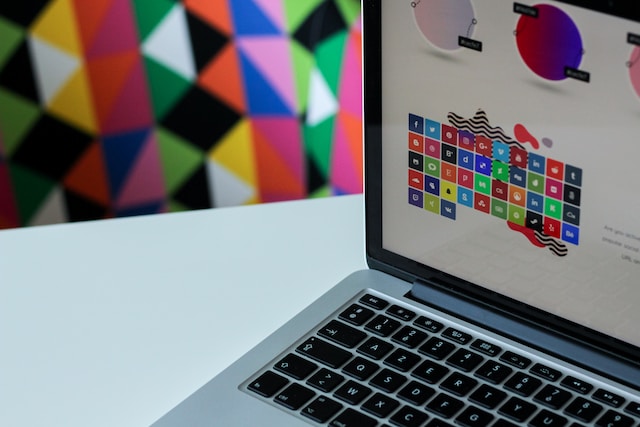Navigating the Digital Canvas: Reflections on Current Trends in Web Design
In the dynamic realm of web design, recent events and trends have been steering the course of digital aesthetics and user experience. As businesses and individuals alike strive to create compelling online narratives, it's evident that the field of web design is not only evolving but also adapting to meet the ever-changing needs of users. This opinion piece delves into some of the recent events and trends shaping the landscape of web design, shedding light on their implications for the future.

Fluidity of User-Centric Design: A Paradigm Shift
Recent events with respect to Melbourne web design have reinforced the significance of user-centric design, ushering in a paradigm shift that places the user experience at the forefront of web design considerations. A survey conducted by Salesforce Research found that 84% of customers consider their experience with a brand to be as important as its products. Web design practitioners are embracing this shift by crafting websites that prioritize seamless navigation, personalized content, and accessibility. This emphasis on user-centricity marks a departure from the one-size-fits-all approach, allowing for more engaging and meaningful interactions.
Dark Mode: Aesthetic and Functional Appeal
The advent of dark mode has taken the web design landscape by storm, driven by both aesthetic preferences and functional considerations. A study by Nielsen Norman Group indicates that dark mode reduces screen glare and enhances visual comfort in low-light environments. Melbourne web designers are integrating dark mode to align with current design trends and offer users a comfortable and visually pleasing experience. This trend is a testament to the evolving nature of web design, where the interplay of aesthetics and functionality continually shapes the digital canvas.
Motion Graphics and Animation: Elevating User Engagement and Storytelling
The integration of motion graphics and animation has become a cornerstone of modern web design, transforming static web pages into dynamic and engaging digital experiences. From subtle hover effects to full-screen video backgrounds, designers are harnessing animation to guide user attention, communicate complex ideas, and enhance overall usability. This section will delve into the diverse applications of motion graphics in web design, highlighting its role in creating immersive narratives and fostering a deeper connection between the user and the digital content.
Microinteractions: Enhancing Engagement
In the fast-paced digital world, micro-interactions have emerged as subtle yet impactful design elements that elevate user engagement. Research by Dan Saffer, a user experience designer, suggests that well-designed micro-interactions can create a sense of accomplishment and delight for users. Web designers are infusing websites with these small, interactive moments—such as animated buttons, subtle hover effects, and progress indicators—that not only enhance usability but also contribute to an enjoyable browsing experience. This micro-interaction focus underscores the attention to detail that defines modern web design practices.

Sustainability as a Design Ethos
Amid growing environmental consciousness, sustainability has emerged as an influential factor in web design considerations. A report by the World Wildlife Fund indicates that 84% of consumers consider sustainability when making purchasing decisions. Melbourne web designers are integrating eco-friendly design practices, optimizing website performance to reduce carbon footprint, and promoting sustainable values through visual elements. This shift towards sustainable design reflects the broader trend of aligning digital practices with ethical and environmental values.
Inclusive Design: Pioneering Web Accessibility for All Users
With a growing emphasis on inclusivity, web designers are recognizing the significance of creating interfaces that cater to diverse user needs. This subsection will delve into the world of inclusive design, discussing strategies such as implementing alt text for images, utilizing semantic HTML for better screen reader compatibility, and designing with consideration for users with varying motor skills. By exploring real-world case studies and success stories, this section will underscore the impact of inclusive design on user satisfaction and engagement.
Data Privacy and Ethical Design: Balancing Personalization with User Trust
In an era where data breaches and privacy concerns are at the forefront of user consciousness, ethical design practices have gained prominence. This subheading will examine the delicate balance between personalization and user data privacy, spotlighting strategies such as transparent data collection methods, simplified cookie consent mechanisms, and user-friendly privacy settings. By delving into the ethical considerations of web design, this section will underscore the importance of fostering user trust and maintaining a respectful approach to data usage in the digital realm.

Conclusion
The landscape of web design stands as a vibrant canvas, perpetually reshaped by the interplay of user preferences, technological advances, design trends, and shifting societal values. Throughout this exploration of current trends in web design, we have delved into several key facets that are propelling the field forward.
From the captivating allure of motion graphics and animation to the inclusive principles of design that prioritize accessibility for all users, the journey of contemporary web design has taken a distinctly user-centric turn. The integration of immersive micro-interactions and the thoughtful application of inclusive design principles emphasize the deepening connection between users and the digital experiences they interact with. In this journey, web designers are not merely creators but facilitators of meaningful interactions that resonate with a diverse audience.
Copyright © . All Rights Reserved